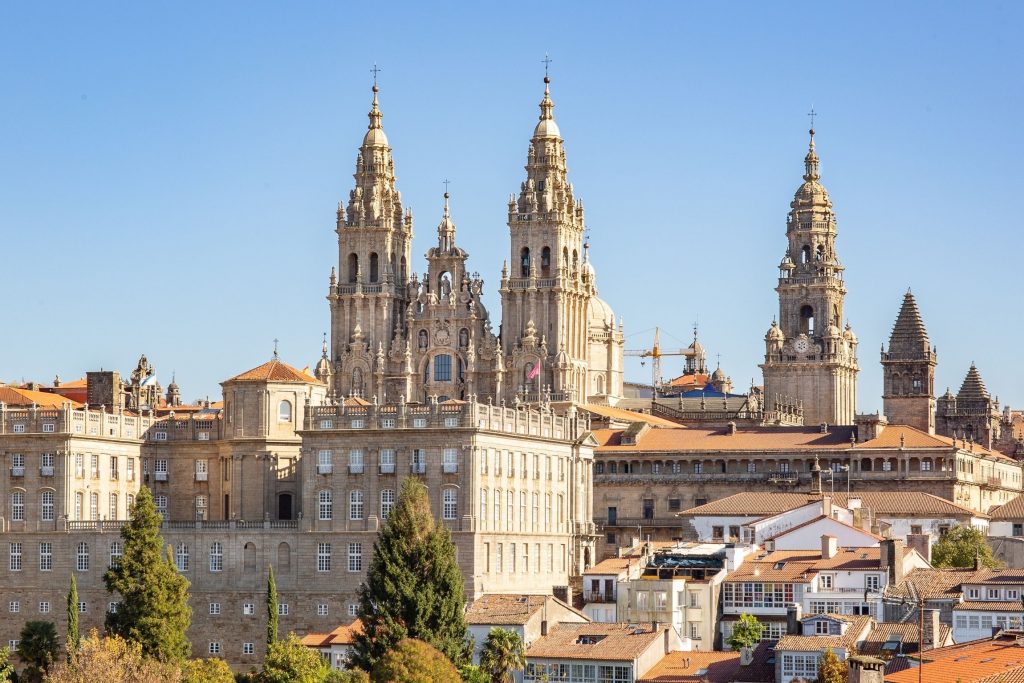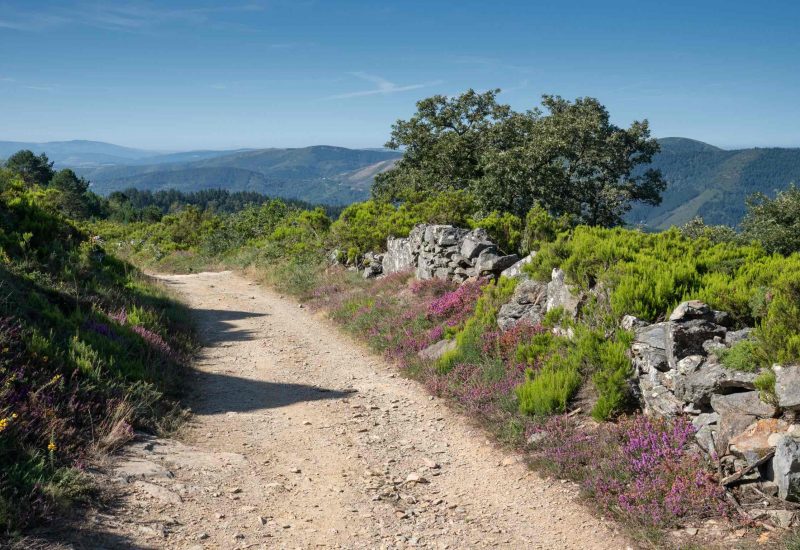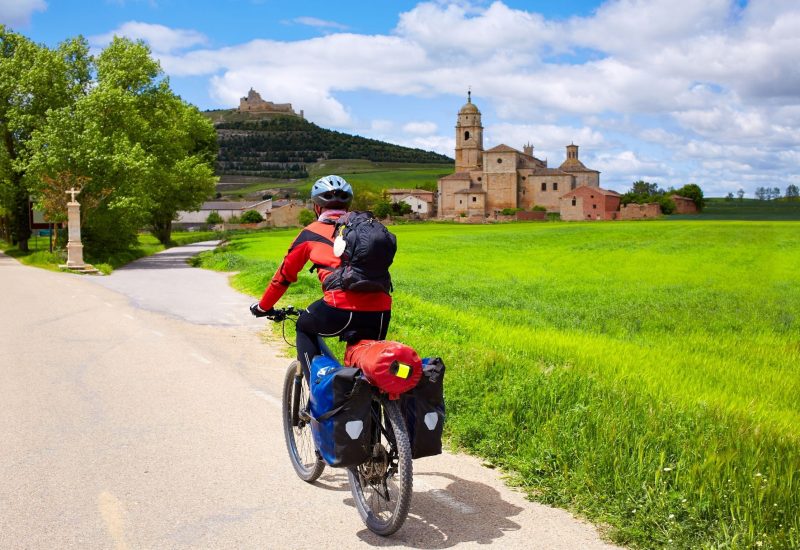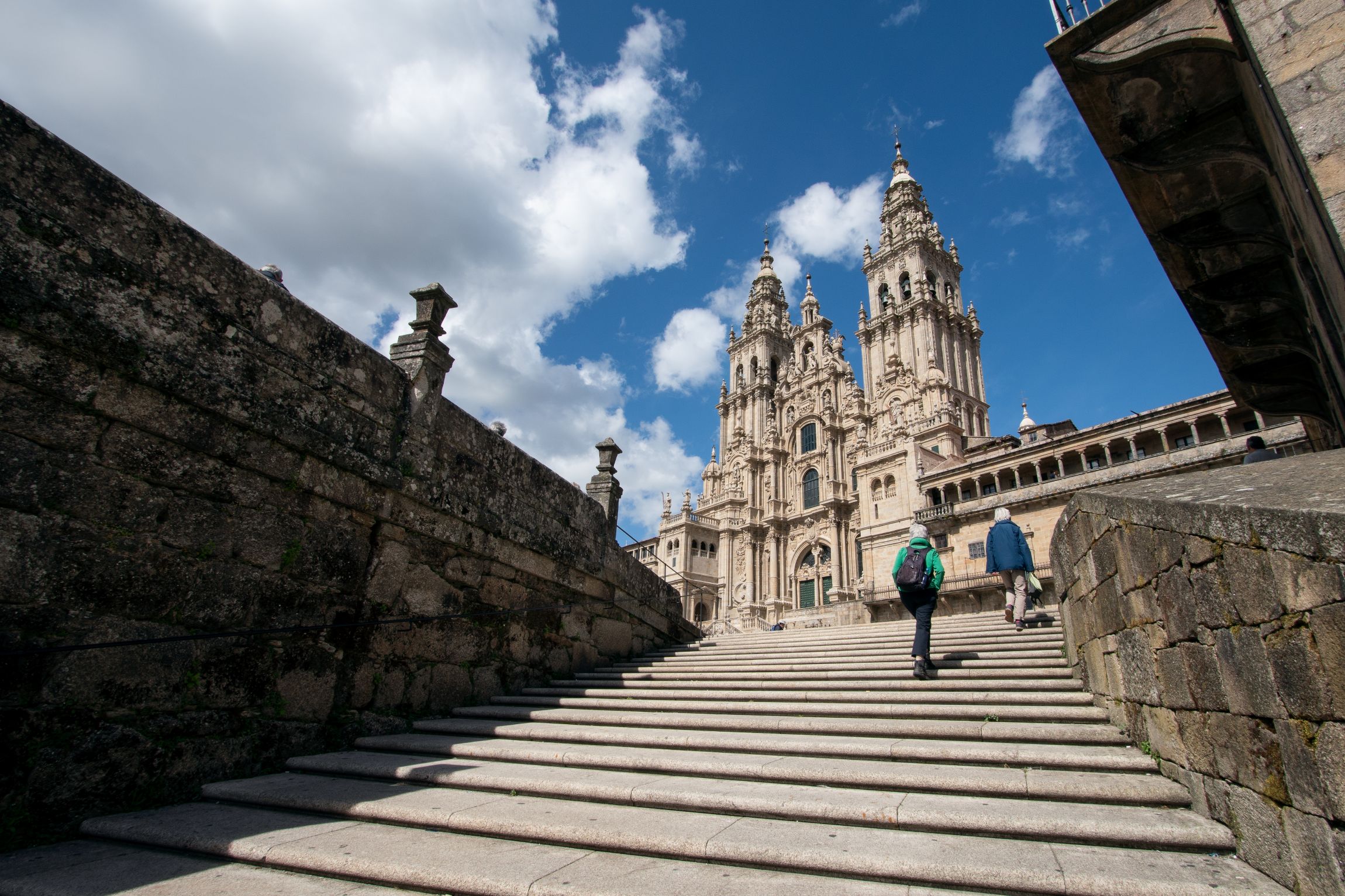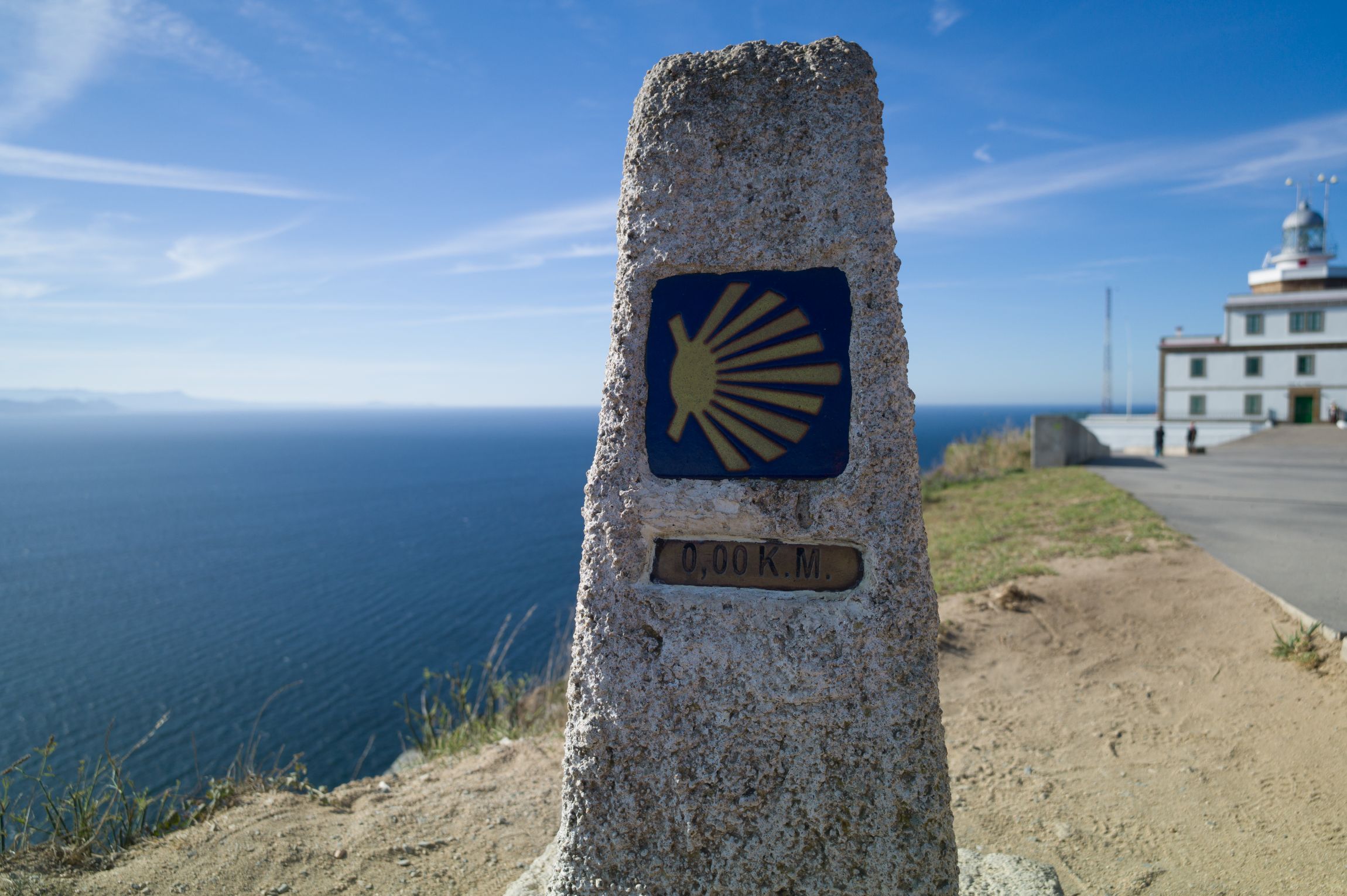History of the Camino de Santiago
The Camino has been a place of encounter for pilgrims and cultures for over a thousand years. The fascinating and evolving history of the Camino de Santiago is shaped by this cultural exchange.
This rich heritage as well as the wonderful landscapes, ancient architecture and centuries-old traditions make the Camino a unique space and special journey that connects us with history, with others and with ourselves.
Hundreds of thousands of pilgrims of all faiths, ages and backgrounds walk to Santiago de Compostela every year taking the different Camino de Santiago routes that stretch for miles across Europe, but where did it all begin?
Let us introduce you to the fascinating history of the Camino de Santiago, the pilgrimage to Santiago de Compostela.
Origins of the Camino
It is believed that the Camino de Santiago trail is a pre-Christian ancient route that pre-dates the discovery of the tomb of St James, as the trail follows the Milky Way West, all the way to the place believed to be the edge of the known world: Cape Fisterra (Finis Terrae or Lands End in Latin).
However it would be the discovery of the remains of St James in the 9th century that would place Santiago de Compostela as one of the main pilgrimage destinations of the Christian world, along with Jerusalem and Rome; and mark the start of the history of the Camino de Santiago as we know it today.
It was a shepherd named Pelayo who, following a shooting star, stumbled upon the remains believed to be those of St James the Apostle on a field. This legend gives Santiago de Compostela its name which literally means St James of the Field of Stars.
The First Camino Pilgrim
Having been informed of the discovery of the tomb of St James by Bishop Teodomiro, Alfonso II King of Asturias was the first one to travel on foot to Santiago de Compostela to confirm the discovery and give it the royal seal of approval, therefore becoming the first ever pilgrim on the Camino de Santiago.
He travelled from Oviedo and took the route known today as the Camino Primitivo, which crosses the mountains of the Cantabrian Mountain Range from modern-day Asturias into Galicia. It was quite an arduous journey even for today’s pilgrims.
King Alfonso ordered a chapel to be built for the relics, which would be the origins of the Cathedral of Santiago de Compostela.
Camino de Santiago Pilgrimage Heyday
As word of the discovery spread, pilgrims from all over Europe started to travel to Santiago. Medieval pilgrims to Santiago de Compostela would have to start their journeys from their own towns and villages. As a result, different Camino de Santiago routes developed over centuries, as pilgrims travelled from all corners of Europe and beyond.
Pilgrimage was a big adventure in the Middle Ages, as described by French scholar Aymerid Picaud in the 12th century Codex Calixtinus, considered the first ever ‘guidebook’ for pilgrims on the Camino Frances. This big adventure often meant dangers and challenges that couldn’t be fixed as easily as in modern day, with the support of 21st century technology. There was safety in numbers and pilgrims tended to gather and join forces on certain paths on their way to Santiago.
In some cases, whole towns and cities developed and grew in order to host and protect pilgrims on their way to Santiago. This was particularly the case of the Camino Francés, which was promoted as the safest route for pilgrims in the Middle Ages with various kings making it their mission to protect pilgrims. Many services were built for pilgrims along the route, such as hospitals and bridges; and towns and villages flourished, their growth and prosperity intertwined with the development and history of the Camino de Santiago itself.
For 21st century pilgrims, the Camino de Santiago remains a great adventure, although for different reasons, and there are many different trails to choose from, each of them with their particular history, heritage, culture and, yes, food too!
The Middle Ages marked the heyday of pilgrimage in the Christian world, including Santiago de Compostela. Many ‘personalities’ made their way to Santiago such as Francis of Assisi and King Sancho II of Portugal.
In the year 1120 Pope Calixto II would give Santiago the privilege of the Holy Year, which would mean all years when 25th July, Feast of St James, falls on a Sunday would be considered ‘holy’ and pilgrims to Santiago would get plenary indulgence. The scallop shell would become their symbol, as a proof that they had travelled all the way to Galicia.
Pilgrims had very different reasons for their pilgrimage to Santiago de Compostela: European nobles travelled with their entourage as a way of ‘exploring’ new territories, an early form of tourism; but there was also what is known as ‘delegated pilgrimages’ undertaken by pilgrims on behalf of another person, in some cases for money. In some countries such as the Netherlands and the Germanic and French empires it also became a common penalty for certain crimes.
From the 14th century on, pilgrimages in general would experience a decrease in numbers as a result of the Black Death that swept Europe. From the 16th century, the Camino de Santiago would start to suffer a gradual decline as a result of war conflicts within Europe and the emergence of Protestantism. The tradition of the Camino would nearly disappear and its history forgotten until the 1970s when an unlikely hero came to the rescue…
20th Century Rediscovery
His name was Elías Valiña Sampedro and he was the parish priest of O Cebreiro, a tiny mountain village on the Camino Frances. He was the mastermind behind the yellow arrows that have come to represent the Camino de Santiago and the main promoter of the trail’s resurgence.
Born in Sarria in 1929, he had studied at Salamanca University where he presented a thesis focusing on the history of the Camino de Santiago in the 1960s, when the Camino was largely forgotten. Valiña made it his mission to spread the word and promote the Camino de Santiago, lobbying local authorities and bringing people together to help him on his quest to rediscover the trail.
In the 1980s he travelled the Camino Frances on his Citroen GS and brush in hand, painted the now iconic yellow arrows and marked the whole way from Roncesvalles in the Pyrenees to Santiago.
Having been stopped by the Guardia Civil with a tin of yellow paint near the French border and asked what he was up to, he responded he was ‘planning a quiet invasion’. He envisioned a new heyday for the Camino and he would have been amazed by today’s popularity of the trail.
Elías Valiña died in 1989, so he didn’t get to see it recognised as a UNESCO World Heritage Site for its ‘outstanding universal value’ in 1993, which was a Xacobeo Holy Year. He didn’t get to see his ‘quiet invasion’ finally happening, with the number of pilgrims from all over the globe growing every year (499,242 pilgrims received their Compostela certificate in 2024); but he has a very special place in the history of the Camino de Santiago
His resting place can be visited at the Basilica of Santa Maria Real in O Cebreiro and a statue outside the church honours this priest who led the way for so many pilgrims to Santiago.
We hope you enjoyed learning about the History of the Camino.
Contact Us
Fill in this form to let us know the Camino you have in mind and request a call back or an email with travel suggestions. Sign up to the JWT newsletter to be the first one to receive tips, special offers and information about new tours by email.



